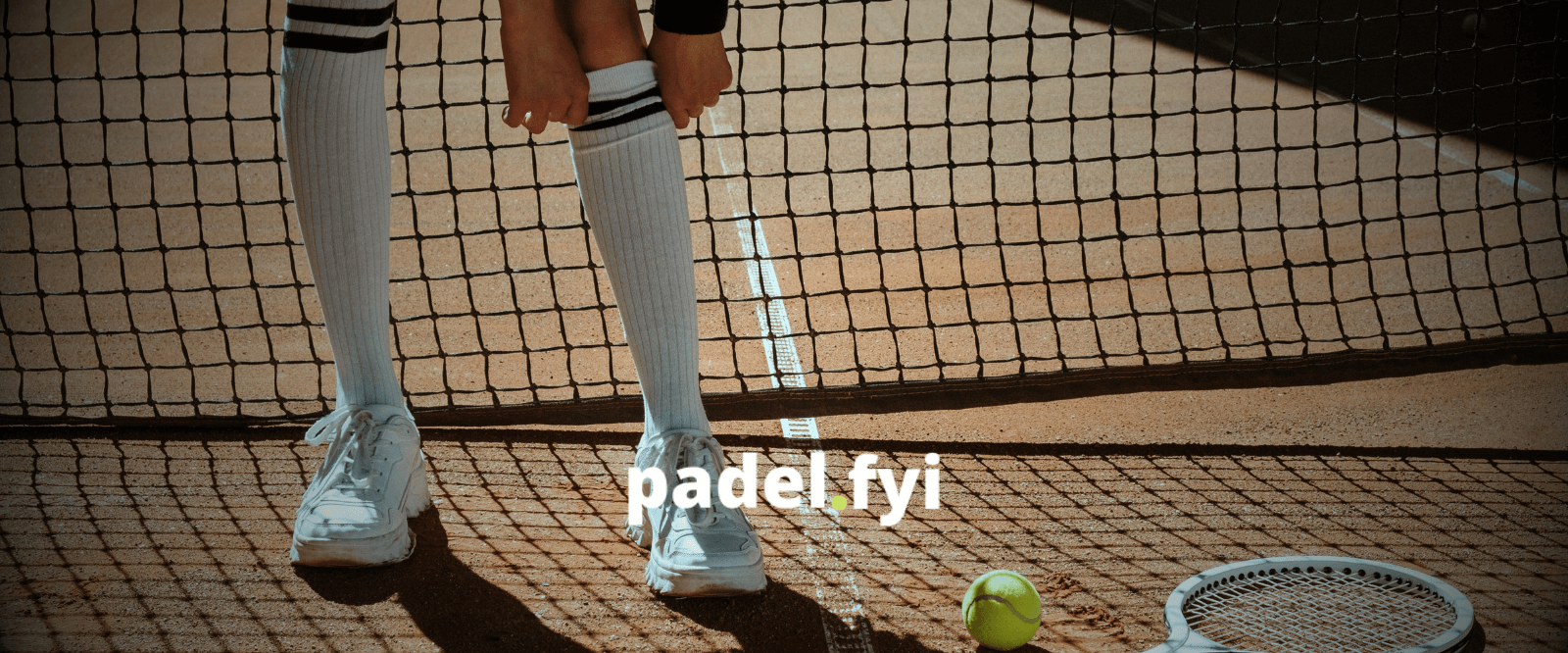To choose padel shoes, first, determine your traction preferences - go for high traction if you live in a wet climate and/or play on sandy surfaces. Second, determine your stability vs. cushion preferences: prioritize rigidity and stability if you have sensitive ankles, and prioritize high cushion if you have sensitive knees.
As padel continues to gain popularity around the world, it is essential to choose the right footwear to maximize performance and avoid injury.Padel can be played with clay court tennis shoes, but it is best to select specially designed padel shoes.
Do not play padel in running shoes or basketball shoes - you will run the risk of injury, such as knee pain or ankle spraining.
In this guide, we will explore the best options for padel shoes available in the market .
The right padel shoe will keep your feet and joints safe and help you perform at a higher level.
Padel shoe decision summary: 1. Traction preferences: high traction for wet and/or sandy surfaces. 2. Stability vs. Cushion vs. Breathability: high stability for sensitive ankles, high cushion for sensitive knees. Breathable and maneuverable shoes sacrifice stability, cushion, and durability for ventilation and agility.Note this guide is written under the assumption of playing under Padel’s standard artificial turf surface. Shoes with less traction can be used on concrete or other surfaces.

Our top scoring models at the time of writing, for example, the Jet Premura 2 and the Nox AT10 Lux, are also some of the most expensive models.
What you receive for your extra investment is a shoe that’s been designed from the ground up for padel - not one that’s been altered slightly from the tennis model.
You also receive solid performance across all categories: stability, cushioning, breathability, and maneuverability.
Above all these shoes pleasantly surprised their reviewers in one or more aspects of their performance.
In their defense, the manufactures are devoting considerable investment into R&D.
While, if you’re a casual, infrequent player, there is no need to spend over €80 for your padel shoes.
Padel Shoe Traction
.png)
The traction is the amount of grip a shoe has. Padel shoes were made exclusively with herringbone patterns until recently.
Herringbone is the conventional tennis clay court shoe sole. Its deep grooves find traction despite playing on the clay tennis courts. Naturally, this transferred well to padel’s sandy artificial turf courts.
However, the movement over the past few years has been to alter the herringbone pattern to reduce the likelihood of injury due to getting stuck on the new Mondo curled grass courts.
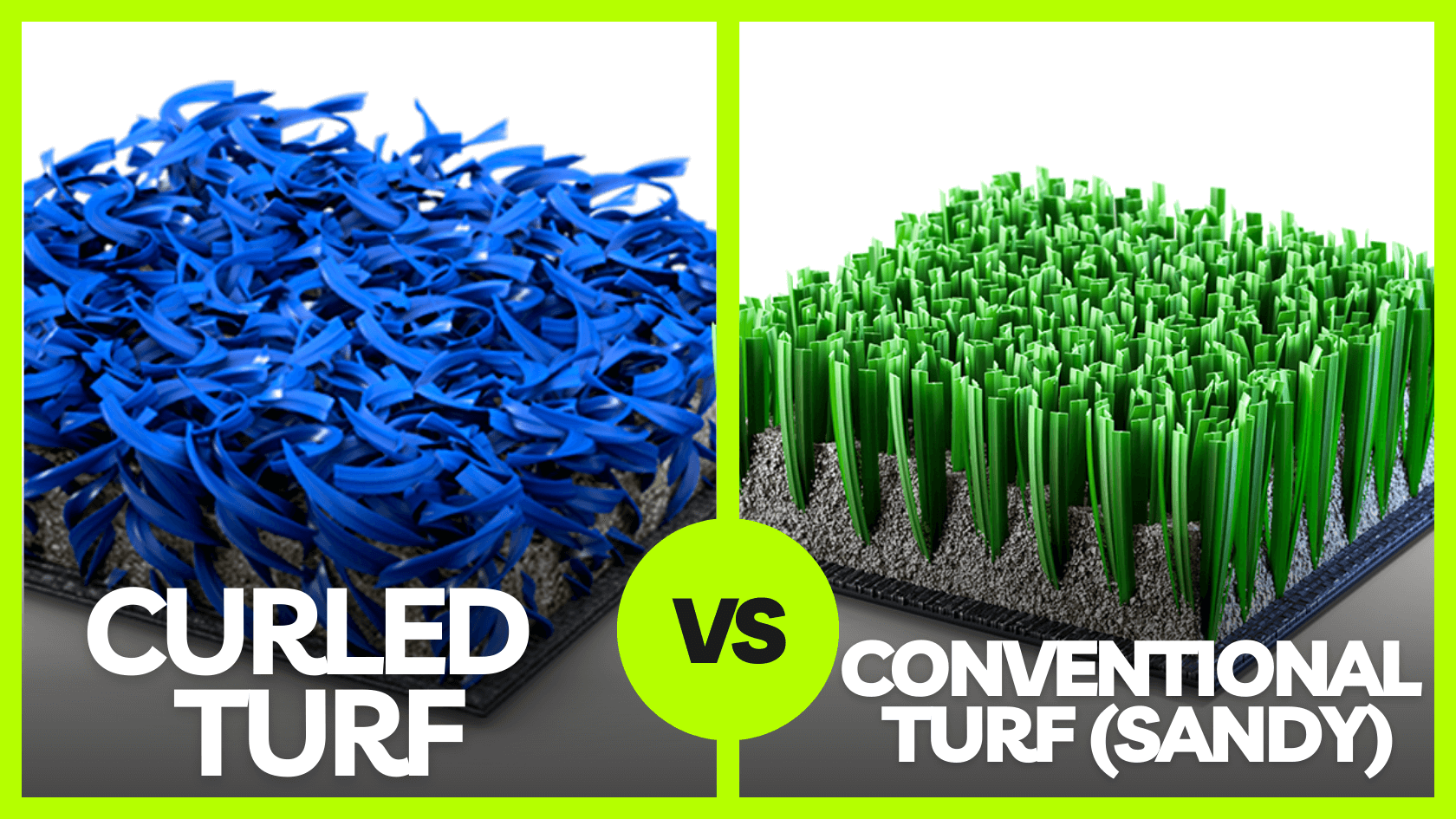
The new courts, which are the same courts used in the professional tours, require less sand, and the sand that is present sinks into the bottom of the surface.
As a result, players’ shoes don’t need as much traction to grip on the new courts.
Further, when you have too much traction on the new curled grass surface, your foot often gets accidentally “hooked”, which causes strain on your knees. Overstraining your knees will lead to injury.
As a result all padel shoe makers are investing into the research and development of padel-specific soles. A few trends are emerging:
- Herringbone-inspired patterns with shorter peaks- Ridges between sections for greater flexibility- Rotation circles- More traction in the interior of the sole for better rotation- Studs- Ventilation zones
It’s an exiting time, and we look forward to what the future of padel shoe sole technology brings.
Some players living in wet environments opt to have a second pair of shoes with higher traction for the wet season in order to maintain the same sliding style throughout the year.
Padel Shoe Width
Do you have wide feet or narrow feet?You want your shoes to fit as snugly as possible without putting pressure on your feet. Some models of brands run more narrow than others, looking at you Asics Gel Resolutions.
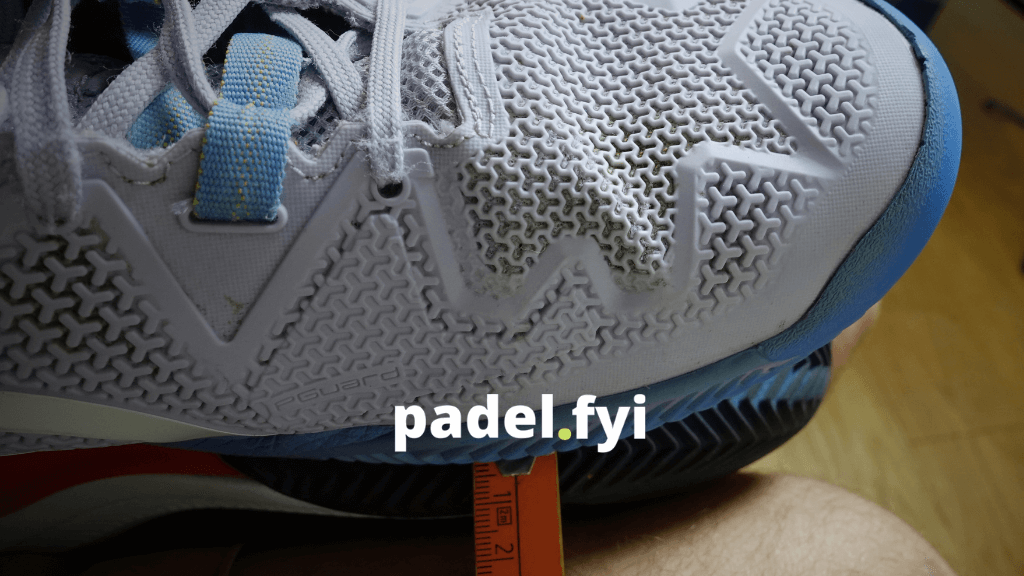
Keep this in mind as you explore your options.
Padel Shoe Stability
With padel’s rapid circular movements, stability is arguably the most important characteristic of a padel shoe.
The manufacturers are moving toward increased external reinforcement.
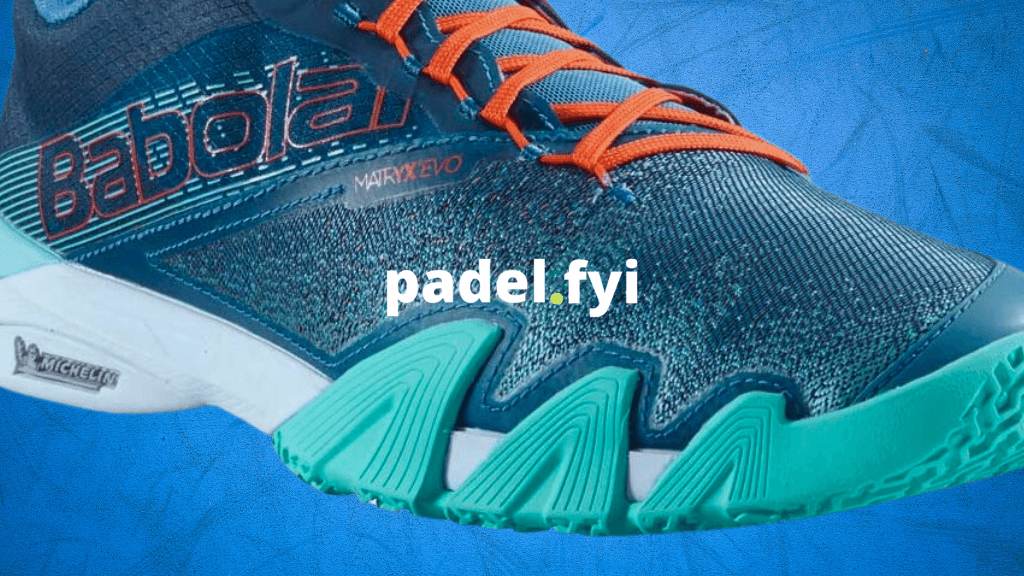
Babolat increased the height of the rigid rubber reinforcements around its toe box in the new Jet Premuras.
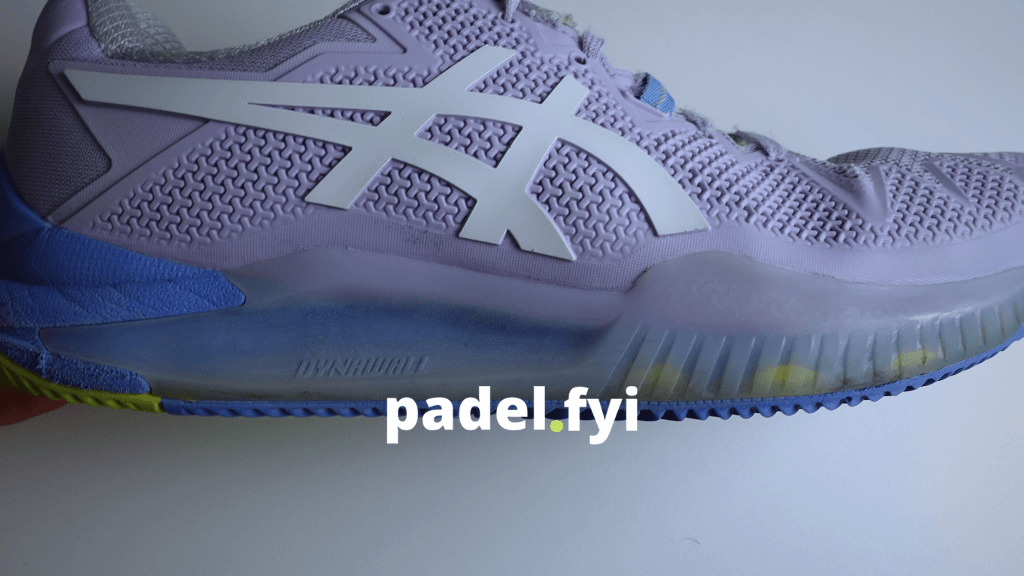
Asics DynaWall was originally developed for stability in lateral movements for baseline tennis players. It gave us excellent stability on the padel court.
Padel Shoe Cushion
Padel shoe cushion is made up of two parts: the upper’s cushioning and the mid sole cushioning.
The upper cushioning results in increased stability resulting from the comfortable way the shoe wraps the player’s foot.
The primary determinant of our cushioning score, however, is the foam used in the mid sole. This foam, usually EVA or ethylene vinyl acetate - the same material used in the core of padel rackets, dampens shocks when we land from jumps.
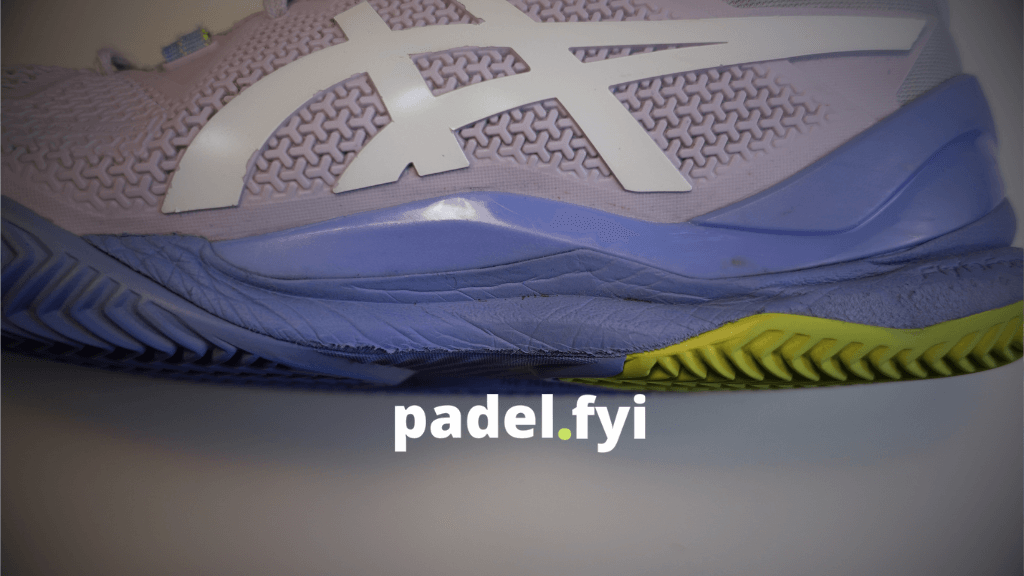
The midsole of the Gel Resolutions was great for the first few months, but after that, the veins indicate that it has compressed. At this point, the midsole is not offering the shock absorption that it should.
Without this cushioning, players would send send vibrations up their knees and hips when landing from jumping.
This leads to injury.
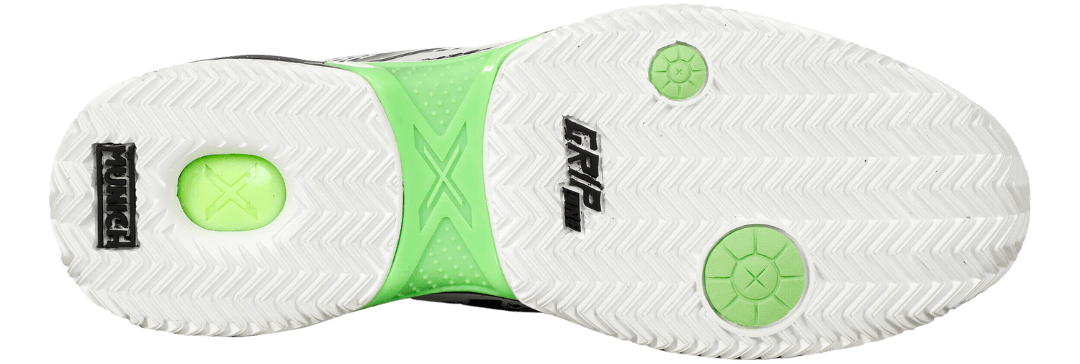
We are particularly vulnerable to this if we land on our heels, so many manufacturers make this area particularly soft.
Padel Shoe Breathability
My wife doesn’t let me keep my padel shoes in the bedroom. It’s really that bad. Don’t be like me.
Seriously though, our feet sweat like crazy on the court, and some of us have higher ventilation needs than others do.
A pair of breathable shoes will reduce the amount we need to spend washing our shoes, which reduces their life span.
Recently, manufacturers have dramatically increased the proportion mesh in the uppers, which may result in decreased durability, but definitely allows more ventilation to our feet.
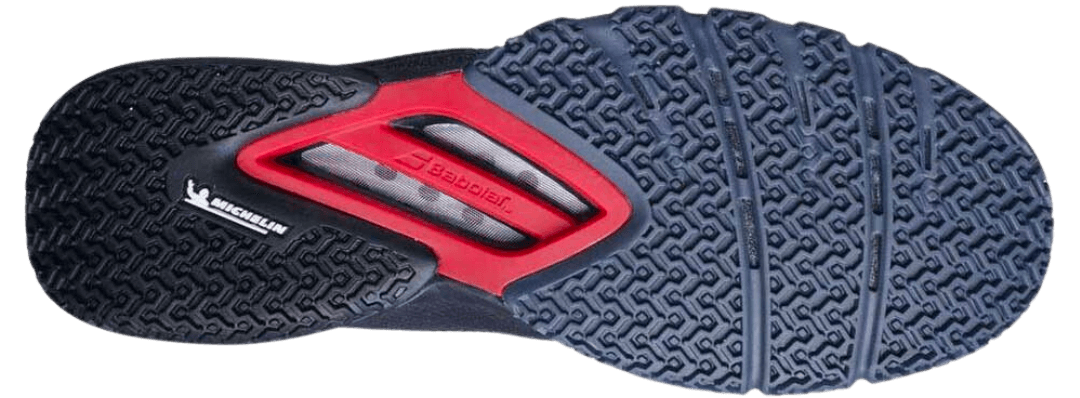
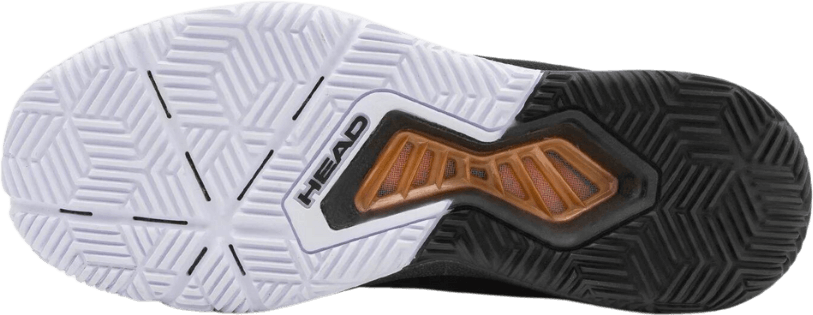
Players may want to consider a warmer pair of padel shoes for the winter if they have great circulation.
Also, consider using a cedar shoe tree when your shoes are not in use.

The wood soaks up the moisture on the inside of your shoe, which helps control bacterial growth and slow the degradation of the leather.
Padel Shoe Maneuverability
Weight, drop, and reactivity.These are the aspects we pay attention to when evaluating a padel shoe’s maneuverability.
Unfortunately, weight values are hard to track down, so we have limited data here. Weights in size EU 42.5/US 9.5/UK 8.5:
- Gel Resolution 8s with the Clay sole - 388g- Gel Padel Pro 5s - 326g
The drop is an under-appreciated quality of shoe that quantifies the decline from heel to toe, usually measured in centimeters.
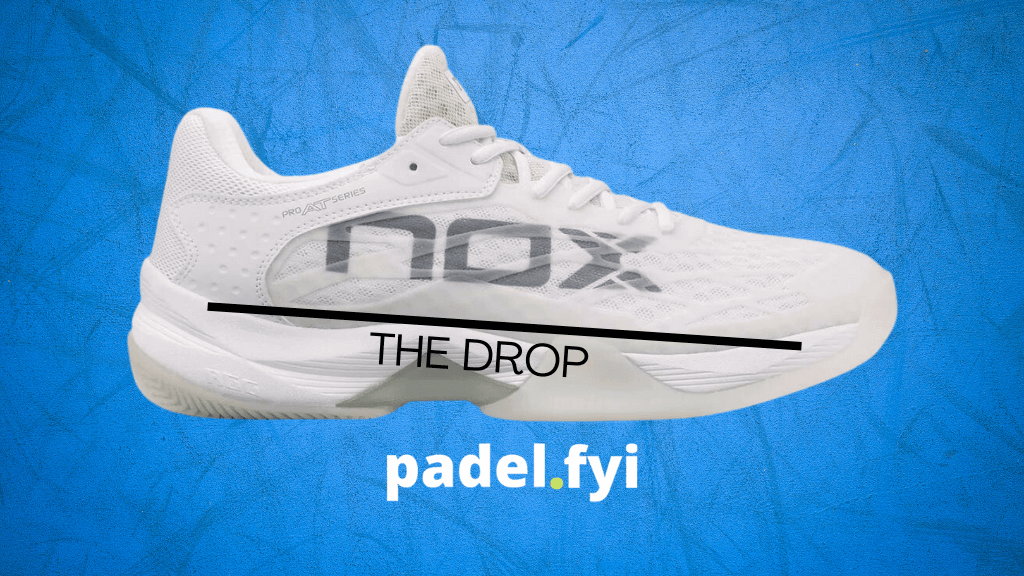
This incline helps you land on your toes from jumps - to avoid sending shocks up your joints - and helps you maintain ready position.
Not all manufacturers release data on the drop of their shoes.
Reactivity determines the amount of energy response a shoe delivers to the player.
When you push off for a lunge, does the shoe feel doughy or springy?Many players prefer harder, performance shoes to softer shoes for the reactivity and sensitivity that a “less comfortable” shoe provides.
Padel Shoe Anatomy
This guide will refer to the different parts of a padel shoe, so here’s a quick overview of the padel shoe anatomy.
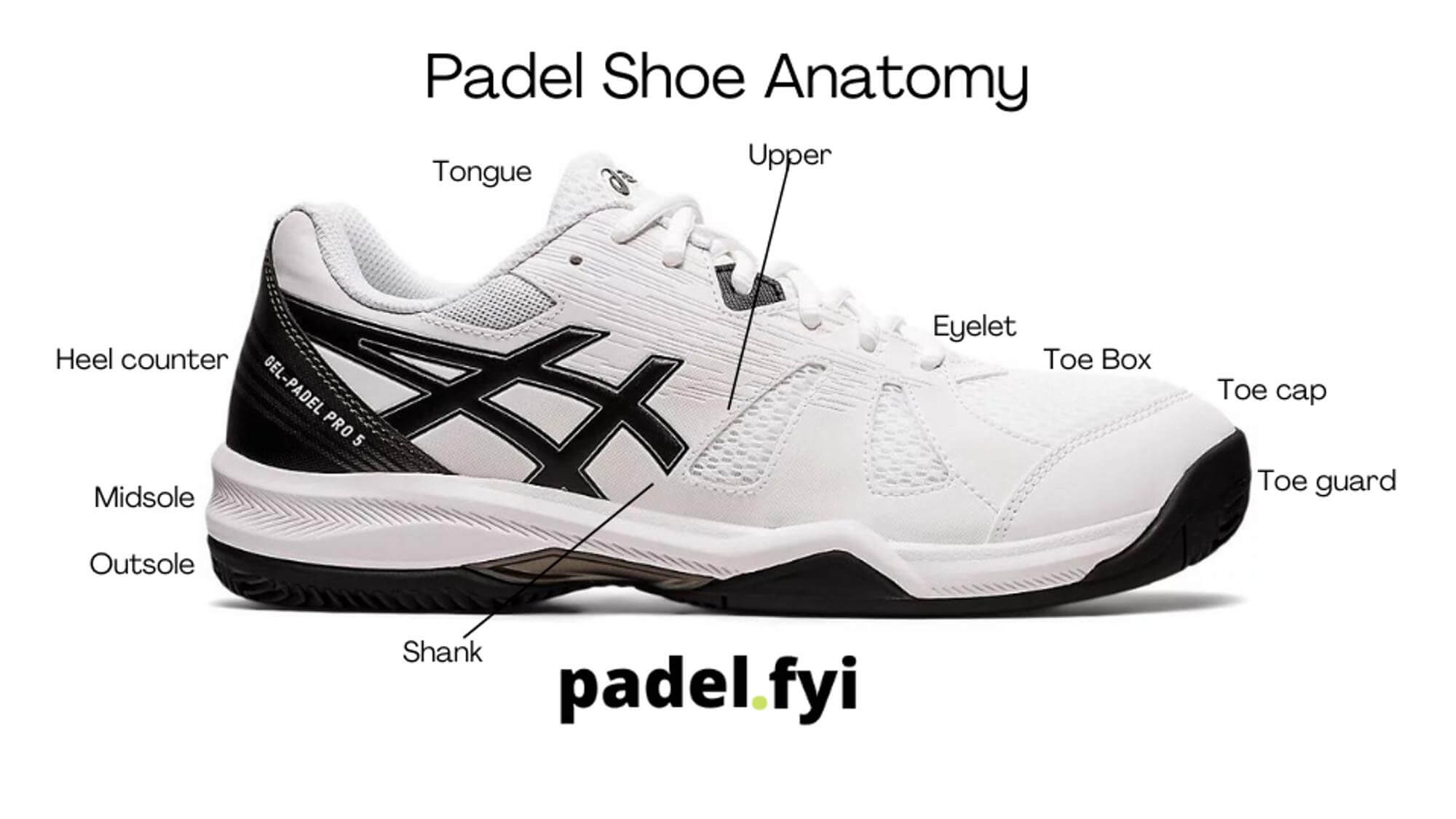
Outsole
The bottom rubber layer of a padel shoe’s outsole offers durability and traction.
Depending on playing style and environment, players have various preferences regarding the level of traction they desire from their grip.
Players who do not slide and who play on conventional courts with a lot of sand and/or wet courts likely desire high traction from their sole.
A conventional herringbone sole with high ridges will deliver the most traction, but some padel shoes manufacturers are moving away from this sole pattern with the increase in construction of Mondo curled grass courts.
Different players have varying preferences regarding the grip of their shoes. Some players opt for high traction, while others prefer a slight level of flexibility when it comes to stopping or sliding.
Midsole
The midsole, positioned between the outsole and the insole, serves as the thickest layer of a shoe’s sole and plays a crucial role in providing cushioning. Thinner midsoles offer a closer-to-the-ground sensation, enhancing the responsiveness of the shoe. On the other hand, thicker midsoles are designed to minimize the impact of shocks and provide additional cushioning.
Shank
The shank is a rigid piece of material in the sole of the shoe to maintain the shoe’s form and prevent contortion.
Upper
The upper is the material that wraps around your foot from the sole to keep your foot in place. It is also responsible for keeping your feet cool and fresh.
Collar
This cushion wraps around your ankle, keeping your foot securely in place. Not only does it offer support, but it also shields your heel from the heel counter, all while delivering supreme comfort.
Heel Counter
The heel counter is located at the back of the shoe to reinforce the heel and provide stability. It’s usually woven into the shoe’s upper.
The collar and the heel counter should wrap your foot deeply into the shoe in order to provide maximum stability.
Toe Box
The section of a shoe that surrounds a player’s toes is the toe box. The toe cap sits outside the toe box at the front of the shoe. Players with wide feet will prefer a wide toe box.
How are Padel shoes designed?
Padel shoes are designed to meet padel’s unique demands on feet. Padel shoes offer specific features that provide additional cushioning and optimal traction to prevent foot injuries.
Padel is distinguished by its dynamic movements, fast turns, and constant pivots on a relatively small court. For this reason, having the right shoes is essential for optimal performance and safety.
Padel shoes are designed to withstand the intense lateral movements that characterize this sport. They provide stability and support for quick directional changes, letting you move confidently up, down, and around the court.
Another important benefit of these shoes is the protection they provide to the knees. By having a specific sole and design, they help absorb impact and reduce stress on joints.
When choosing padel shoes, you should most carefully consider traction and stability. Secondarily, cushioning preferences and durability concerns will also come into play.Major athletic shoe brands offer a wide range of options to suit different styles of play and specific needs.
Final words
Ultimately, the choice of padel shoes will depend on your individual needs and playing preferences. Remember to consider factors such as sole, grip, comfort, stability, and price when making your decision.
Frequently Asked Questions
Are padel shoes the same as tennis shoes?
Padel shoes are similar to clay court tennis shoes with a high-traction sole and reinforcements for stability. They differ in their weight and cushion. Tennis shoes weigh more because they receive additional reinforcement. Padel shoes are stiffer to provide greater sensibility on the court.
How to choose padel shoes?
First, determine your traction preferences - go for high traction if you live in a wet climate and/or play on sandy surfaces. Second, determine your stability vs. cushion preferences: prioritize rigidity and stability if you have sensitive ankles, and prioritize high cushion if you have sensitive knees.
Frequently Asked Questions
Are padel shoes the same as tennis shoes?
Padel shoes are similar to clay court tennis shoes with a high-traction sole and reinforcements for stability. They differ in their weight and cushion. Tennis shoes weigh more because they receive additional reinforcement. Padel shoes are stiffer to provide greater sensibility on the court.
How to choose padel shoes?
First, determine your traction preferences - go for high traction if you live in a wet climate and/or play on sandy surfaces. Second, determine your stability vs. cushion preferences: prioritize rigidity and stability if you have sensitive ankles, and prioritize high cushion if you have sensitive knees.
